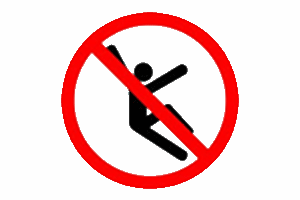
We may not be able to prevent all falls, but there are many immediate steps we can take to stay safely on our feet most, or all, the time. Statistics about the alarmingly increasing rate of injurious falls and their cost, (both to quality of life and the healthcare system), can easily be found online. This blog will focus solely on prevention.
Step 1 – Do a Home Safety Check
Most falls happen in or just outside our home. Use the following checklist to see if there are modifiable environmental hazards putting you at risk of falling.
Inside the home:
-
- Check that stair railings are secure and always use them. Consider placing one rail on each side on the staircase.
- Are all stairways well lit?
- Is the staircase carpet loose or torn?
- Does the staircase carpet have so much padding that it’s difficult to feel the front edge of the stair.
- Use night lights to light the path from the bedroom to the bathroom.
- Use products in the bathroom such as handrails, grab bars, and adhesive strips on the bathtub floor to prevent slipping on wet surfaces. Having at least one secure grab bar in the bathtub and/or shower is very important.
- Place pet food bowls in easy to see places. Consider purchasing raised stands for these bowls.
- If extension cords are necessary, make sure they do not stretch across walkways.
- Are all rugs, runners, and mats slip-resistant?
- Are all passageways, living spaces, and exits clear of clutter?
- Avoid wearing flipflops or loose-fitting shoes/slippers.
- Are smoke detectors properly located and working?
- If you use a cane or walker, periodically check the tips for wear or damage.
Outside the home:
-
- Are all walkways free of large cracks or loose pavers?
- If there are steps to enter the home, is there a secure railing in place?
- Is there adequate lighting?
- Snow: Once cleared, use ice melt products on walkways to ensure better traction. Also:
- Assume all dark, wet areas on pavement are icy and walk around them.
- Consider using YakTrax or possibly MICROspikes for exceptional traction (1,2). These traction devices can be attached to the soles of your shoes to enable safer walking on snowy or icy terrain.
- Don’t use your cell phone while walking!
Step 2 – Do a Body System Check
Many falls are the result of one or more of the following impairments that can sneak up on us over time. Regular checkups are a must.
Vision: Multiple studies have liked poor vision to an increased risk of falling. But there are interesting, less obvious examples of vision-related falls. For example, Gutiérrez-Robledo and colleagues found that first-eye cataract surgery reduced the incidence of falls by one third (3). In the VISIBLE study (4), it was found that switching from bifocals to single vision lenses reduced the fall rate by up to 40%.
Hearing and the Vestibular System: Hearing loss affects not only our ability to perceive sound, but it can also affect our balance. While this connection needs to be researched further, it has been suggested that people who have diminished hearing also have poorer balance and are at higher risk for falls (5). Regular check-ups can help catch early signs of hearing loss.
Disturbances to the inner ear or vestibular system which cause dizziness or vertigo wreak havoc on our balance. These conditions can often be successfully treated by physical therapists who specialize in vestibular rehabilitation.
Balance: Determine your baseline balance ability with the simple One Leg Stance Test. Stand near a sturdy object for safety and raise one foot off the floor. Don’t lean it onto your other leg. Count how many seconds you can hold this position without holding on and with your eyes open. Below is a table of the normative values (by decade) of what our score is expected to be:
Age 20-29 43.3 seconds
Age 30-39 43.3 seconds
Age 40-49 40.3 seconds
Age 50-59 37.0 seconds
Age 60-69 27.0 seconds
Age 70-79 17.2 seconds
Age 80-99 8.5 seconds
Step 3 – Do A Periodic Medication Review
Medications should be considered a potentially modifiable risk factor for falls, and we need to be aware of those that are known to increase the risk. Examples include antidepressants, anticonvulsants, antipsychotics, and muscle relaxants.
In addition, the simultaneous use of multiple medications, known as polypharmacy, is often associated with adverse outcomes, including falls. Shaver and colleagues studied more than 400,000 medical records of adults aged 65 years and older and found that 94% had prescriptions for one or more medications that are known to increase the risk of falling (6).
Doing a periodic medication review with your primary care doctor is essential.
Step 4 – Exercise Regularly
Stronger muscles and good posture translate into better stability, improved function in everyday activities, and a reduced risk of falls and injuries.
Make it a priority to improve and maintain balance throughout your life by participating in an exercise program that focuses on postural alignment, balance, strength, and body awareness.
See you in Strong Bones class 😉
- https://www.yaktrax.com
- https://www.rei.com/product/890608/kahtoola-microspikes-traction-system
- Gutiérrez-Robledo LM, et al. Effect of Cataract Surgery on Frequency of Falls among Older Persons: A Systematic Review and Meta-Analysis. J Ophthalmology 2021.
- Haran MJ, et al. Effect on Falls of Providing Single Lens Distance Vision Glasses to Multifocal Glasses Wearers: VISIBLE Randomised Controlled Trial. British Medical Journal 2010.
- Carpenter MG, Campos JL. The Effects of Hearing Loss on Balance: A Critical Review.Ear and Hearing 2020;41 Suppl 1:107S-119S.
- Shaver AL, et al. Trends in Fall-related Mortality and Fall Risk Increasing Drugs Among Older Individuals in the United States,1999-2017. Pharmacoepidemiology and Drug Safety 2021 Aug;30(8):1049-1056.

